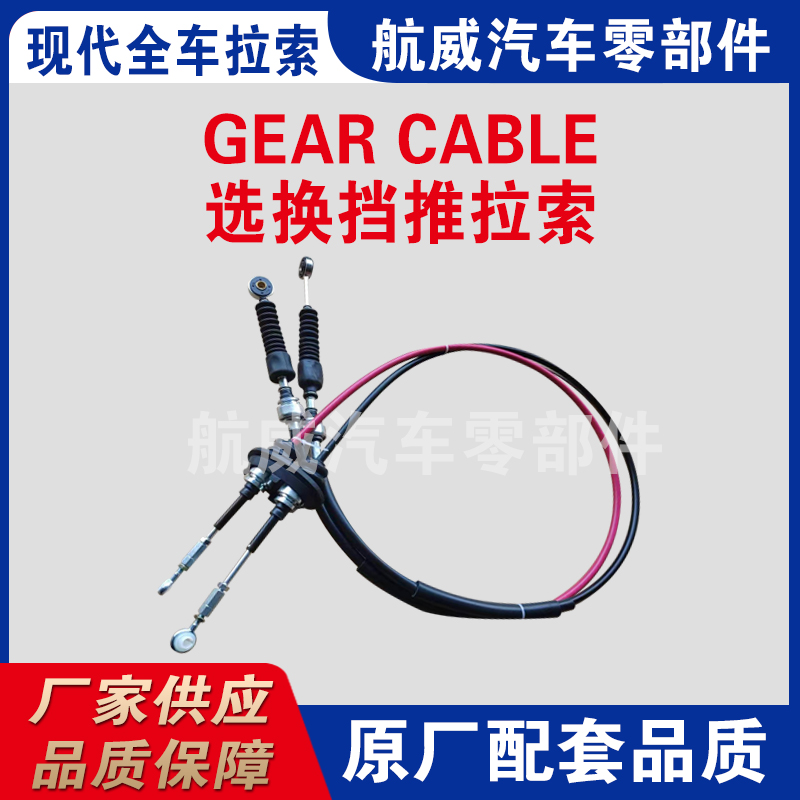Gear Cable: Durable, Smooth-Shifting, OEM-Grade Replacement
Shift Selector Cable: an insider’s take on modern shift-control cables
I spent a week evaluating a Gear Cable assembly built for today’s transmissions—manual, automatic, even hybrid DCTs. To be honest, the humble cable has become a quiet hero: lighter, cleaner-routing, and far more consistent than many older rod-based linkages. The maker I visited (origin: Qinghe County Minjiang Street south, Wuzhishan Road east) calls it the “Shift Selector Cable,” but in workshops everyone still says Gear Cable. Same idea, just better materials and smarter testing.

Industry trends you can actually feel
Three trends stand out: lightweight architecture (smaller bend radii, tighter routing), lower NVH with PTFE-lined housings, and “by-wire friendly” redundancy where a mechanical Gear Cable coexists with electronic interlocks. EV platforms still need robust park/shift mechanisms, which, surprisingly, keeps premium cables in the conversation.
Technical specifications (typical)
| Item | Spec (≈ typical) | Notes |
|---|---|---|
| Cable core | SUS304 multi‑strand (7×7) | High fatigue resistance |
| Outer jacket | PA12 or TPEE over low-friction liner (PTFE/POM) | Low stick‑slip |
| Nominal diameter | ≈ 6–10 mm | Depends on load/stroke |
| Stroke length | ≈ 80–120 mm | Real-world use may vary |
| Min. bend radius | ≈ 120–160 mm | Routing critical for feel |
| Operating temperature | −40 to +120 °C | Short peaks to 140 °C |
| Corrosion resistance | ≥ 240 h NSS | ISO 9227/ASTM B117 |
| Life cycle | ≥ 300k cycles | Per ISO 13337-style tests |
| Certifications | IATF 16949, ISO 9001 | Process quality |
How it’s built (the short version)
- Materials: SUS304 strands, PTFE liner, PA12/TPEE jacket, zinc‑nickel plated fittings.- Methods: precision strand layup → extrusion of liner and jacket → end‑fitting swage/crimp → boot over‑molding → 100% pull/functional test.
- Testing: friction/effort curve, backlash, thermal soak and shock (per ISO 16750 concept), vibration, salt spray (ISO 9227), life cycling to failure; Bowden cable checks referencing DIN 71986.
- Service life: designed for 10–15 years vehicle duty, usually longer if routing is clean and seals intact.
- Industries: passenger cars, light trucks, buses, off‑highway, marine throttle/shift.
Where it shines
Transmission selectors, manual gearboxes, column shifters, marine stern‑drive controls, and—oddly enough—retrofitting classic cars to get rid of that rubbery feel. Many customers say the immediate benefit is smoother detent passage and less winter drag.

Vendor snapshot (field notes)
| Vendor | Certifications | Min. Bend Radius | Corrosion Spec | Customization Lead Time |
|---|---|---|---|---|
| HWEI (Shift Selector Cable) | IATF 16949, ISO 9001 | ≈ 130 mm | ≥ 240 h NSS | 2–4 weeks |
| Vendor A (global) | IATF 16949 | ≈ 150 mm | ≥ 240 h NSS | 4–6 weeks |
| Vendor B (regional) | ISO 9001 | ≈ 160 mm | ≥ 120 h NSS | 3–5 weeks |
Customization and fit
Lengths, stroke, end fittings (eye, clevis, ball‑stud), boots and seals, bracket geometry, and low‑temp grease are all customizable. It seems that tighter engine bays benefit from the smaller bend radius options and heat sleeves near turbos. If you’re chasing a crisp shift feel, pair the Gear Cable with rigid mounting and minimal S‑bends.
Mini case studies
- Compact SUV: swap to PTFE‑liner version reduced peak shift effort ≈18% and winter effort drift by ≈25% vs legacy cable; warranty claims down quarter‑over‑quarter.
- Marine inboard: zinc‑nickel hardware + sealed boots achieved 480 h salt spray with no red rust; throttle detent repeatability improved after 200k cycles.
Feedback has been candid: “smoother gate transitions,” “less play at the lever,” and, occasionally, “should’ve upgraded sooner.” Fair enough.
Why this matters
A robust Gear Cable preserves selector precision over years of heat, splash, and vibration. The combination of stainless strands, low‑friction liners, and disciplined testing is what separates a decent drive from a great one.
Authoritative references
- DIN 71986 – Bowden cables for road vehicles: requirements and tests.
- ISO 13337 – Road vehicles — Control cable assemblies — Test methods.
- ISO 9227 – Corrosion tests in artificial atmospheres — Salt spray tests.
- ASTM B117 – Standard Practice for Operating Salt Spray (Fog) Apparatus.
- ISO 16750 – Road vehicles — Environmental conditions and testing.
- IATF 16949 & ISO 9001 – Quality management systems for automotive manufacturing.
-
Clutch Line: Braided, Leak-Proof, OEM-Grade PerformanceNewsNov.10,2025
-
Throttle Cable: Durable, Smooth Control & Universal FitNewsNov.10,2025
-
Throttle Cable: Durable, Smooth, Universal Fit, Easy InstallNewsNov.10,2025
-
Clutch Line: Durable, Leak-Proof, OEM-Grade PerformanceNewsNov.10,2025
-
Hand Brake Cable | Custom, Universal & Trailer SolutionsNewsNov.10,2025
-
Clutch Line: High-Pressure, OEM-Fit, Corrosion-ResistantNewsNov.03,2025
